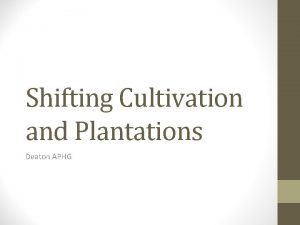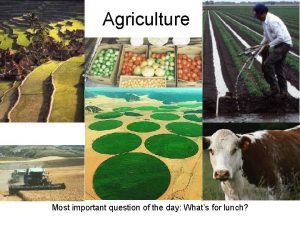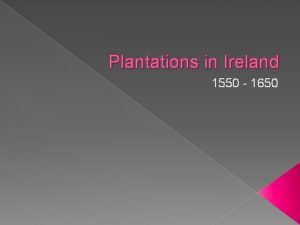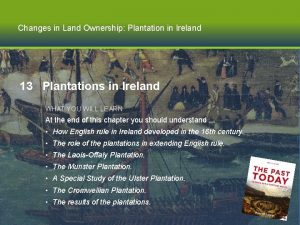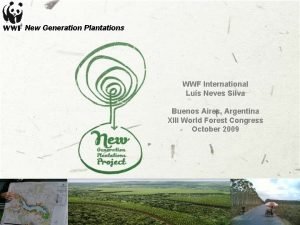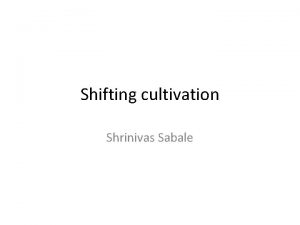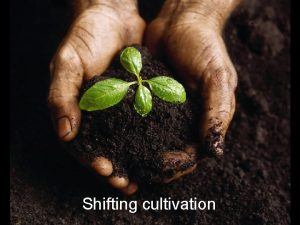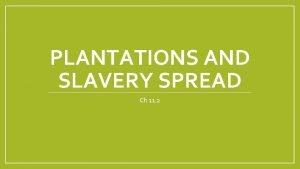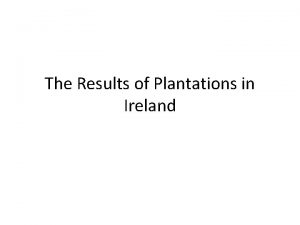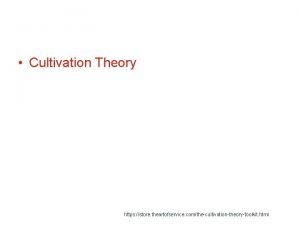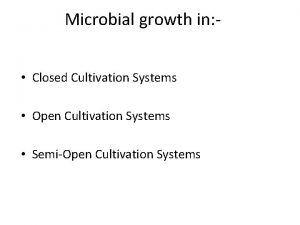Shifting Cultivation and Plantations Deaton APHG Shifting Cultivation













- Slides: 13

Shifting Cultivation and Plantations Deaton APHG

Shifting Cultivation Used the most in tropical landscapes: lots of rainfall, high temperatures, low latitude. 2 distinct characteristics Slash and burn agriculture- cut the vegetation and burn the debris = fertilizes the soil. Only use the field for a few years until the nutrients are gone. Will not return for many years until it recovers = slash and burn again.

Shifting Cultivation • The crops • This varies according to the region and the custom of taste. • Southeast Asia: rice • South America: corn/maize • Africa: millet and sorghum • All/multiple regions: Yams, sugarcane, and veggies • Mainly due to diffusion

Shifting Cultivation • Land ownership • Owned by the village • Chief or elders allocates land to families • Less than 5% of the world’s population engages in shifting cultivation. • Why?

Shifting Cultivation • Future • Being replaced by logging, cattle ranching, and cash crops. • LDC’s see it as an inefficient way to grow food. • More places/regions are being converted towards more modern means.

Shifting Cultivation • Critics of it: • Too old and not enough production. • Not a good use of space. • Should be used for development after cleared. Not left barren. • Can lead to deforestation and global warming.

Shifting Cultivation • Defenders of it: • Consider it the most environmentally sound approach in the tropics. • Prevents the use of pesticides and fertilizers. • Changing it can upset the local diversity of cultures in the tropics. It is connected to social, religious, and political customs.

Pastoral Nomadism • A type of subsistence agriculture that relies upon the herding of domesticated animals. • Unlike subsistence farmers, they depend primarily upon the animals rather than their crops for survival. • They will still eat primarily grains rather than meat, but they use the animals for other things. • Often trade animal goods with other subsistence farmers.

Pastoral Nomadism • Choice of Animals • Depends on local cultural and physical characteristics. • Camel: • Goat: • Sheep: • The # of animals depends on the size of the group.

Pastoral Nomadism • Transhumance: seasonal migration of livestock between mountains and lowland pasture areas. • Pasture: grass or other plants grown for feeding grazing animals.

Pastoral Nomadism • It’s future: • Declining form of agriculture due to modern technology. • Governments like China, Kazakhstan, Egypt, Isreal, and Syria have tried to force nomads into cooperatives so that their land can be used for other purposes • Mining • Commercial farming

Plantation Farming • Plantation: • A large farm that specializes in one or two crops • It is a form of intensive subsistence farming: implies that the farmer must work harder to subsist on a parcel of land. • Usually requires the use of outside workers due to the labor levels. • Most have been replaced with machine labor • Sod, tobacco, cotton, coffee, sugar, etc.

Plantation Farming • The first form and widely used is still, wet rice. • Planting rice on dry land in a nursery and then moving the seedlings to a flooded field to promote growth. • Dominant type of agriculture in SE China, East India, and SE Asia.
 Shifting cultivation ap human geography
Shifting cultivation ap human geography Shifting cultivation and taungya system
Shifting cultivation and taungya system Whats subsistence agriculture
Whats subsistence agriculture Thermoisoplethendiagramm tropen
Thermoisoplethendiagramm tropen Wanderfeldbau definition
Wanderfeldbau definition Southampton county, virginia plantations
Southampton county, virginia plantations Plantations of ireland
Plantations of ireland The laois offaly plantation
The laois offaly plantation Wwf new generation
Wwf new generation Township and range ap human geography
Township and range ap human geography Maladaptive diffusion ap human geography
Maladaptive diffusion ap human geography Suburbanization ap human geography
Suburbanization ap human geography Ap human geography map projections
Ap human geography map projections Weber's least cost theory
Weber's least cost theory
